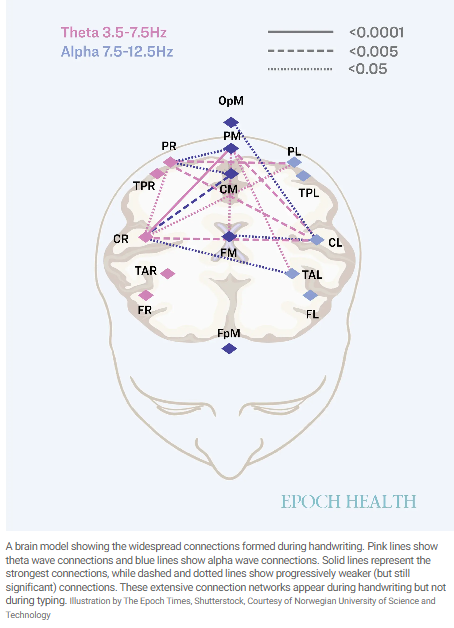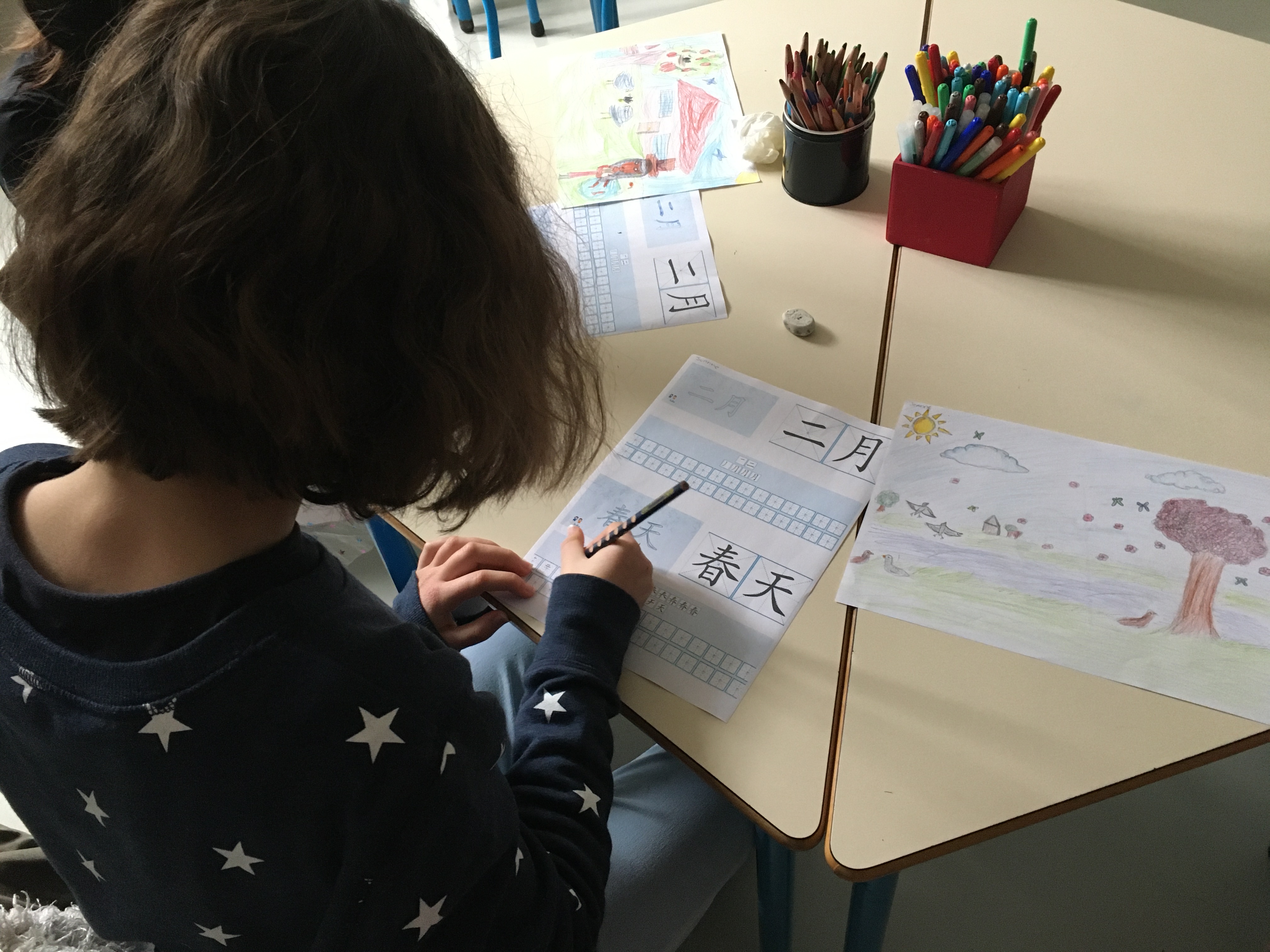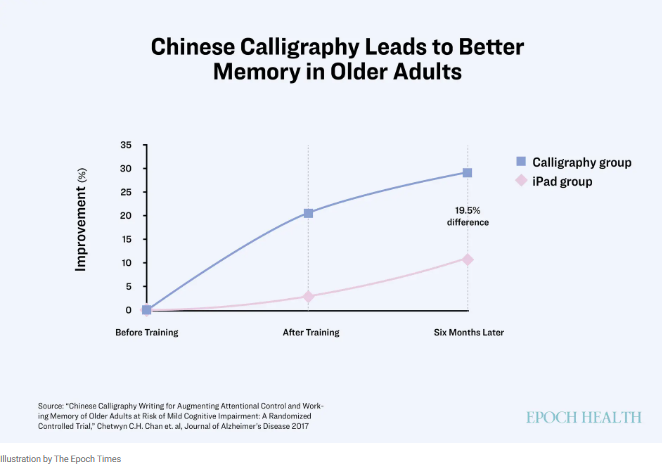In an increasingly digitized world, the practice of handwriting is often replaced by typing, prompting researchers to explore how these modes of communication impact cognitive functioning. Recent studies have demonstrated that handwriting, particularly in complex scripts, engages the brain in unique and beneficial ways. A notable example is the writing of Chinese characters, which combines visual, motor, and cognitive processes in a distinct manner.
Handwriting and Brain Activation
Numerous neurological studies have established that handwriting activates more regions of the brain compared to typing. These include the motor cortex, visual processing areas, and the brain's memory centers. The physical motion of writing helps encode information more deeply, leading to improved memory retention and understanding. For example, a study conducted by the University of Stavanger in Norway found that students who took notes by hand exhibited better comprehension and recall than those who typed their notes.

Source of photo: internet "Handwriting lights up your brain: here is how"
In the context of Chinese characters, this effect is amplified. Each character is a complex combination of strokes that must be executed in a specific sequence. This requires not only fine motor skills but also a deeper level of cognitive engagement. The writer must visualize the character, recall its structure, and then reproduce it accurately, reinforcing neural pathways related to language, memory, and spatial awareness.
The Complexity of Chinese Characters
Chinese is a logographic language, meaning that each character represents a morpheme or a unit of meaning rather than a single phoneme as in alphabetic systems. Learning and writing Chinese characters involve understanding their components (radicals), stroke order, and overall structure. This complexity demands a high degree of cognitive coordination.
Research has shown that learning to write Chinese characters significantly enhances visuospatial skills. Unlike alphabetic scripts, which are linear and phonetic, Chinese characters require the brain to process multidimensional spatial relationships. This stimulates areas of the brain associated with visual memory and attention, offering benefits that extend beyond language learning into general cognitive functioning.

Source of photo: hihilulu Atelier® handwriting time in Chinese language class
Neuroscientific Evidence
Functional magnetic resonance imaging (fMRI) studies have revealed that the act of writing Chinese characters activates both hemispheres of the brain more extensively than typing or writing alphabetic scripts. For instance, a 2011 study published in Brain and Language found that participants who practiced Chinese handwriting exhibited increased activity in the left middle frontal gyrus, the superior parietal lobule, and the fusiform gyrus—all areas implicated in language, motor planning, and visual recognition.
Moreover, these studies suggest that handwriting Chinese characters may contribute to long-term structural changes in the brain. These changes are particularly notable in regions related to working memory and executive function, indicating that regular practice can lead to enhanced cognitive flexibility and problem-solving abilities.
Educational Implications
The educational implications of these findings are profound, particularly for language acquisition and literacy development. In China, traditional handwriting practice remains a cornerstone of early education. Students spend years mastering the intricacies of stroke order, character formation, and composition. This rigorous training is not merely about learning to write but also about cultivating discipline, attention to detail, and cognitive endurance.
While technological fluency is undoubtedly important, the cognitive benefits of handwriting, especially in complex scripts like Chinese, should not be overlooked. Integrating handwriting exercises into the curriculum could enhance learning outcomes, even in multilingual or non-Chinese contexts.
Being conscious the pros and cons of digital tools, hihilulu Atelier® creates touch screen Chinese character writing and stroke tracing sheets for young children between 3 to 6 years old, who have to develop motor skill or are unable to hold pencils, and also provides physical and fun writing sheets of snowballing Chinese characters for children 6 years old onward.

Source of photo: hihilulu Atelier® writing and tracing strok of Chinese characters in language class
Handwriting as a Cognitive Tool Beyond Language
Beyond its linguistic function, handwriting Chinese characters can serve as a meditative and cognitive training tool. The process of writing characters slowly and methodically can induce a state of focused attention similar to mindfulness practices. This can reduce stress, improve emotional regulation, and enhance overall mental well-being.
Moreover, for older adults, handwriting Chinese characters has been shown to have neuroprotective effects. Engaging in such mentally stimulating activities may help delay the onset of cognitive decline and neurodegenerative diseases such as Alzheimer’s. The combination of memory retrieval, fine motor coordination, and visual analysis makes Chinese character writing a powerful cognitive exercise.

Source of photo: internet "Handwriting lights up your brain: here is how"
In short, the practice of handwriting, particularly in complex scripts such as Chinese characters, remains a vital activity for cognitive development and mental acuity. Far from being an outdated skill, handwriting engages multiple areas of the brain, fosters memory and learning, and supports overall cognitive health. As digital technologies continue to permeate education and daily life, it is crucial to preserve and promote handwriting practices that offer profound neurological benefits.
Chinese character handwriting, with its intricate structure and deep cognitive demands, exemplifies the unique advantages of manual writing in enhancing brain function. Future educational and neuroscientific research should continue to explore and advocate for the integration of handwriting into modern learning paradigms.

Source of photo: hihilulu Atelier® calligraphy practice time in Chinese language class
References:
*Mueller, P. A., & Oppenheimer, D. M. (2014). The Pen Is Mightier Than the Keyboard: Advantages of Longhand Over Laptop Note Taking. Psychological Science, 25(6), 1159-1168. https://doi.org/10.1177/0956797614524581, (Original work published 2014)
* F. R. (Ruud) Van der Weel, Audrey van der Meer, Handwriting but not typewriting leads to widespread brain connectivity: a high-density EEG study with implications for the classroom, Front. Psychol., 26 January 2024, Sec. Educational Psychology, Volume 14 - 2023 | https://doi.org/10.3389/fpsyg.2023.1219945 (Original work published 2023)
*Makai Allbert, handwriting lights up your brain-here is how, updated
*Hongbo Yu, Lanyun Gong, Yinchen Qiu, Xiaolin Zhou, Seeing Chinese characters in action: An fMRI study of the perception of writing sequences,
Brain and Language, Volume 119, Issue 2, 2011, https://doi.org/10.1016/j.bandl.2010.11.007., (Original work published 2010 at https://www.sciencedirect.com/science/article/pii/S0093934X10001975 )
Learning Chinese: How to Use Multimedia Contents in the Classroom
Theme-based Learning is a very efficient method for young children’s issue-centered learning. But it could be very challenging to educators. By using hihilulu contents platform, LPT and hihilulu created a Chinese curriculum based on Chinese cartoons.
Learning Chinese: What's the Best Time for Kids to Start?
Hello everyone, today it’s the first time I write an article and share my daughter's language learning experience, I hope you may get some insights after you read this article. Many parents are confused whether kids learn the foreign language will influen...
Learn Halloween Activities and Words in Chinese
Halloween is coming soon! It's the perfect time to talk about pumpkin, spider, witch and masks. Do you know how to say all of these things in Chinese? And are you curious about what kind of activities you could do in a Chinese style Halloween?
hihilulu holds the right to deal with malicious speech in the Comment area.